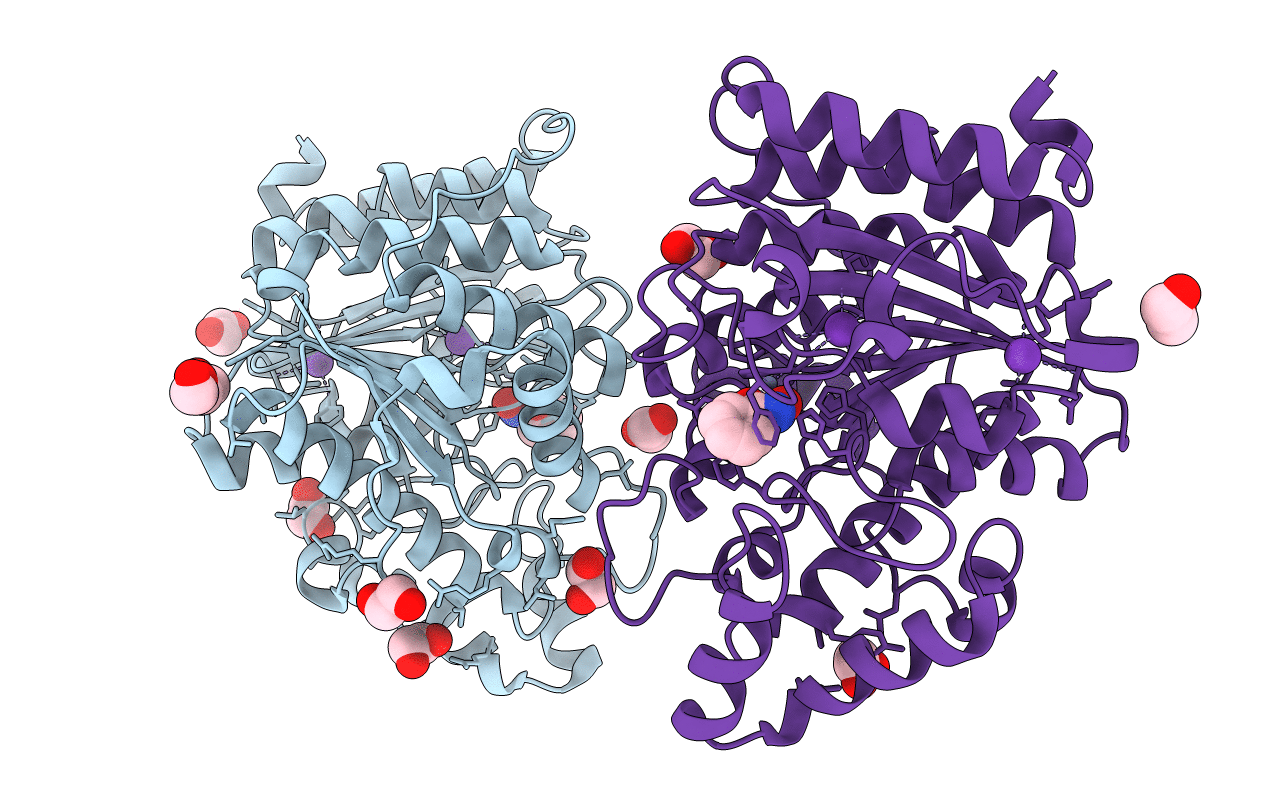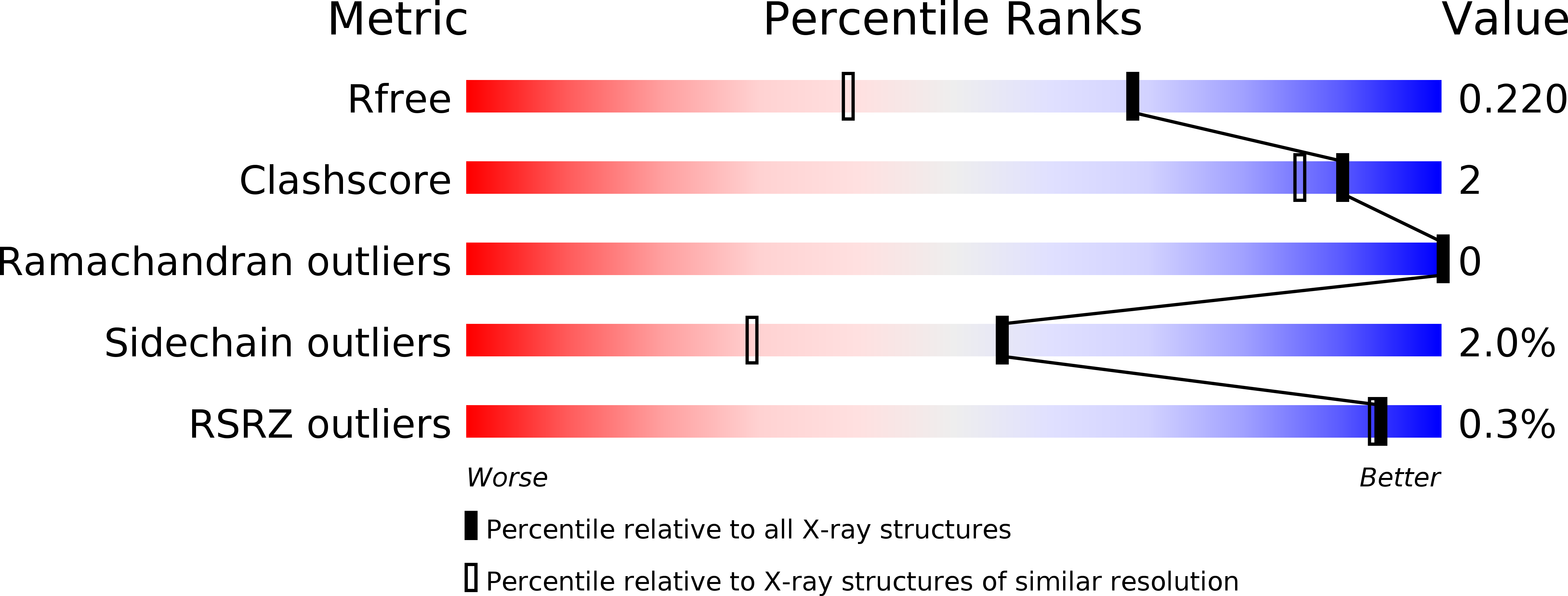
Deposition Date
2018-03-21
Release Date
2018-05-30
Last Version Date
2024-03-13
Entry Detail
PDB ID:
6CSR
Keywords:
Title:
Crystal structure of Danio rerio histone deacetylase 6 catalytic domain 2 in complex with phenylhydroxamate
Biological Source:
Source Organism:
Danio rerio (Taxon ID: 7955)
Host Organism:
Method Details:
Experimental Method:
Resolution:
1.62 Å
R-Value Free:
0.21
R-Value Work:
0.17
R-Value Observed:
0.17
Space Group:
P 21 21 21


